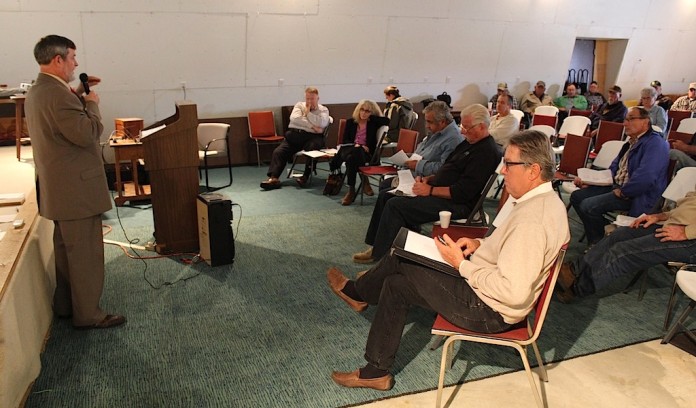
SPENCER, Ohio — Farmers aren’t the only ones complaining about high real estate property taxes. At an April 22 meeting organized by Ohio Farmers Union, farmer and woodlot owners spoke about the effects of a rising Current Agricultural Use Value on woodlands owners.
Paul Mechling, an Ashtabula County veterinarian who serves on the Ohio Forestry Advisory Council and Ohio Wildlife Council, said, like farmers, woodland owners are seeing their taxes increase two- to threefold, or more.
He figured the average woodlands value in his county, in the CAUV program, saw land value increases of more than 500 percent from 2008 to 2014.
Many benefits
Like farm ground, woodlots provide a variety of economic, environmental and social benefits. They supply lumber to Ohio’s furniture and construction industry, provide environmental benefits like clean air, carbon sequestration and repairing watersheds, and they provide for recreational activity.
Mechling owns a 310-acre tree farm that he uses for maple syrup production, and he has a second farm in Perry County, that consists of grain crops and tree production.

He said high CAUV taxes endanger the future of woodlands, much the same as farm ground.
“High commodity prices and high real estate taxes have caused farmers to clear their woodlands … to sell their property to developers,” he said.
As woodlands get divided for development, they become harder to manage.
“Once land is fragmented, it is hard to manage forests and wildlife,” he said.
Leasing property
One way landowners have sought to pay for higher CAUV is by leasing out their property for hunting, but, as Mechling noted, “there’s good and bad points” to leasing.
Although it provides another revenue stream, leases are increasingly being bought by people outside the state and for higher amounts, to the point that “the local people are no longer allowed to hunt on these farms,” he said.
Speaking on Earth Day, Mechling said landowners have a responsibility to transfer farmland and woodland to the next generation, but said that’s hard to do “when we are taxed unfairly.”
Out of whack
Ted Finnarn, a Darke County attorney and member of the Ohio Department of Taxation’s agricultural advisory committee, said CAUV worked well for about 30 years, but a combination of factors have caused it to go “out of whack” recently.
The biggest problem, he said, are the historically low interest rates of the past few years, which, when figured into the capitalization rate used to calculate CAUV, have resulted in much higher taxes.
Tax shift
He said ag real estate taxes increased by about $1.5 billion across the state from 2010 to 2014. Part of the reason was the historical increase in commodity prices and farm profitability, but he believes the bigger issue lies within the CAUV formula.
Legislative reform
The Ohio Farmers Union supports legislation pending in the Ohio legislature that would make certain adjustments to the formula, like excluding equity buildup and appreciation from affecting the capitalization rate, and reducing the tax on qualifying conservation ground.
Finnarn said an overarching problem is that the state has shifted its focus to reducing income taxes, while becoming more reliant on local taxes.
“This is a political battle,” he said. “You’ve got to get a little bit fired up, you’ve got to get angry with your state representatives and state senators.”
Petition drive
The meeting was held at the Risley Agricultural Center in Medina County, a nonprofit operated by organic farmer Gary Mennell.
Mennell reviewed various numbers related to the cost of crop farming, and showed that even under optimal conditions, and after taxes, farmers are likely not to make a profit this year.
“Farming is now facing an agricultural depression because of high taxes,” he said.
Mennell and the Ohio Farmers Union are pushing a petition that would make these and other tax changes, and restore what they see as promises made to farmers through the original creation of CAUV.
The petition has gained several hundred signatures, and a previous version, circulated in 2014-2015, gained about 7,000 signatures. You can learn more about the petition at www.ohiofarmersunion.org.









